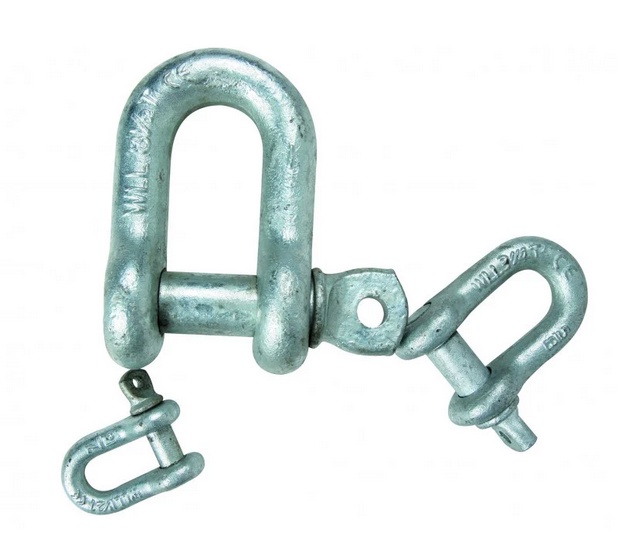Understanding 4-Leg Chain Slings
4-leg chain slings are lifting assemblies composed of four lengths of chain that converge at a single master link or attachment point. Each leg of the sling is equipped with a sling hook or other appropriate fittings for connecting to the load. The multiple legs distribute the weight of the load evenly, providing enhanced stability and safety during lifting operations.
Advantages of 4-Leg Chain Slings
-
Increased Stability: The use of four legs in a chain sling configuration offers greater stability compared to single or double-leg slings. The load is evenly distributed across multiple points, reducing the risk of tilting or shifting during lifting. This enhanced stability is particularly beneficial when handling irregularly shaped or unbalanced loads.
-
Higher Load Capacity: 4-leg chain slings typically have a higher load capacity compared to their single or double-leg counterparts. By distributing the load among four legs, these slings can safely lift heavier loads without exceeding their working load limits. This increased capacity enhances productivity and efficiency in lifting operations, allowing for the handling of larger and heavier items.
-
Versatility in Load Configuration: The multiple legs of a 4-leg chain sling offer flexibility in load configuration, accommodating various lifting points and attachment methods. This versatility allows for the safe lifting of complex loads with multiple connection points, such as machinery, structural components, or machinery with multiple lifting points.
-
Improved Load Control: With four legs providing support and stability, 4-leg chain slings offer better control over the movement and positioning of the load during lifting. Operators can adjust the tension in each leg independently to ensure a balanced lift and minimize the risk of load swinging or shifting, enhancing safety and precision in lifting operations.
-
Redundancy and Reliability: The redundancy provided by multiple legs in a 4-leg chain sling enhances reliability and safety in lifting applications. Even if one leg were to fail or become damaged, the remaining legs can continue to support the load, preventing catastrophic accidents and ensuring the safe completion of the lift.
Applications Across Industries
4-leg chain slings find extensive use across diverse industries and lifting applications, including:
- Construction: Lifting and positioning heavy construction materials, such as steel beams, concrete panels, and prefabricated structures.
- Manufacturing: Handling machinery, equipment, and components during assembly, maintenance, and production processes.
- Shipping and Logistics: Loading and unloading cargo containers, pallets, and oversized items in warehouses, ports, and distribution centers.
- Mining and Extractive Industries: Moving heavy loads, machinery, and materials in mining, quarrying, and extraction operations.
- Utilities and Infrastructure: Installing and maintaining infrastructure components, such as utility poles, transmission towers, and pipeline sections.
Considerations for Optimal Usage
To ensure the safe and effective use of 4 leg chain sling, operators should consider the following factors:
-
Proper Sling Selection: Choose a 4-leg chain sling with the appropriate load capacity, length, and configuration for the specific lifting application. Ensure that the sling is in good condition, with no signs of wear, damage, or corrosion that could compromise its strength and safety.
-
Correct Rigging Practices: Rig the sling according to manufacturer guidelines and industry best practices, ensuring proper attachment to the load and lifting equipment. Use appropriate rigging hardware, such as shackles, master links, and hooks, and inspect them regularly for wear and deformation.
-
Load Weight and Center of Gravity: Determine the weight and center of gravity of the load to calculate the appropriate sling angles and tension distribution among the four legs. Avoid overloading the sling or exceeding its working load limit, as this can lead to sling failure and accidents during lifting.
-
Clear Communication and Coordination: Maintain clear communication and coordination among lift team members to ensure safe and efficient lifting operations. Assign roles and responsibilities, establish signal protocols, and monitor the lift progress to prevent accidents and ensure the safety of personnel and equipment.
-
Regular Inspection and Maintenance: Inspect 4-leg chain slings before each use for signs of wear, damage, or deformation, paying attention to chain links, fittings, and attachment points. Clean and lubricate the sling as needed to prevent corrosion and extend its lifespan, and replace any damaged or worn components promptly to maintain safety and reliability.
Conclusion
4-leg chain slings offer significant advantages in terms of safety, stability, and versatility for lifting and securing heavy loads across diverse industries and applications. With their increased stability, higher load capacity, versatility in load configuration, improved load control, and redundancy, these slings provide a reliable solution for lifting complex and heavy items safely and efficiently. By adhering to proper usage guidelines, selecting the appropriate sling for the task, and conducting regular inspection and maintenance, operators can maximize the safety and effectiveness of 4-leg chain slings in lifting operations. Whether in construction, manufacturing, logistics, or mining, 4-leg chain slings play a critical role in facilitating the movement and handling of heavy loads, ensuring the safety of personnel and equipment throughout the lifting process.


No comments yet